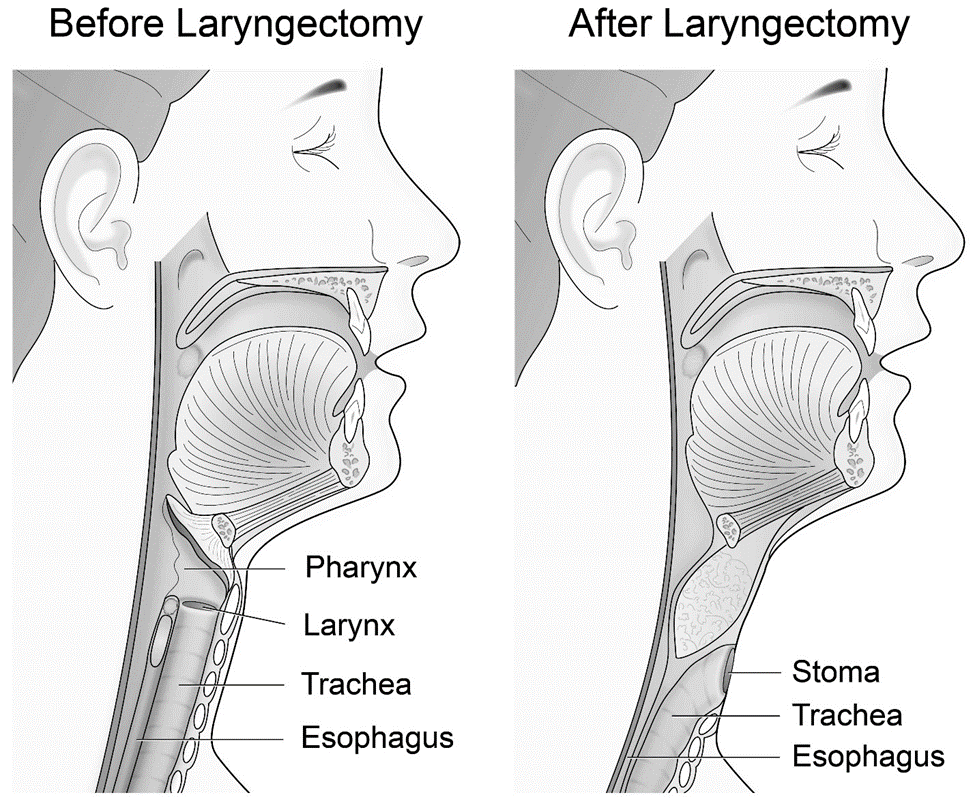A nurse is caring for a client who is in the immediate postoperative period following a partial laryngectomy. Which of the following parameters should the nurse assess first?
Tissue integrity
Pain severity
Airway patency
Wound drainage
The Correct Answer is C
A. Tissue integrity: While assessing tissue integrity is important, ensuring airway patency takes precedence in the immediate postoperative period, especially following a procedure involving the larynx. Maintaining a patent airway is a critical priority.
B. Pain severity: Pain assessment is important, but it is not the primary concern immediately postoperatively in the context of a partial laryngectomy. Airway patency is of higher priority.
C. Airway patency: This is the correct answer. Following a partial laryngectomy, there may be concerns related to airway compromise due to the surgical procedure. The nurse should assess the airway first to ensure there are no obstructions or complications affecting the client's ability to breathe.
D. Wound drainage: While assessing wound drainage is important for monitoring surgical sites, it is not the first priority in the immediate postoperative period following a partial laryngectomy. Airway patency is a more critical concern.

Nursing Test Bank
Naxlex Comprehensive Predictor Exams
Related Questions
Correct Answer is C
Explanation
A. Administer enteric-coated acetaminophen: Acetaminophen is not typically used to address the symptoms described by the client, such as pain in the jaw, back, and shoulder, shortness of breath, and nausea. Moreover, an enteric-coated form of acetaminophen is not likely to address the acute symptoms.
B. Administer ibuprofen: Ibuprofen is a nonsteroidal anti-inflammatory drug (NSAID) and may not be appropriate for the reported symptoms, especially if they are indicative of a cardiac event.
C. Obtain an EKG: This is the correct answer. The client's symptoms, including pain in the jaw, back, and shoulder, shortness of breath, and nausea, are concerning for a possible cardiac event, such as a myocardial infarction (heart attack). An electrocardiogram (EKG) is a crucial diagnostic tool to assess for cardiac abnormalities and should be done promptly.
D. Maintain oxygen saturations greater than or equal to 92%: While maintaining adequate oxygen saturation is important in various clinical situations, the client's symptoms, especially when associated with potential cardiac issues, warrant an immediate EKG to assess for cardiac abnormalities.
Correct Answer is A
Explanation
A. Hacking cough: This is the correct answer. Left-sided heart failure can lead to pulmonary congestion, resulting in a cough that is often described as "hacking" or "persistent." This cough may be worse at night when the client is lying down.
B. Abdominal distension: Abdominal distension is more commonly associated with right-sided heart failure, as fluid accumulates in the abdomen (ascites). In left-sided heart failure, fluid accumulates in the lungs, leading to pulmonary symptoms.
C. Dependent edema: Dependent edema is also more commonly associated with right-sided heart failure. In left-sided heart failure, fluid tends to accumulate in the lungs, causing pulmonary congestion and related symptoms.
D. Jugular venous distention: Jugular venous distention is often seen in right-sided heart failure due to impaired blood flow from the right atrium into the right ventricle. This finding is less likely to be prominent in left-sided heart failure.
Whether you are a student looking to ace your exams or a practicing nurse seeking to enhance your expertise , our nursing education contents will empower you with the confidence and competence to make a difference in the lives of patients and become a respected leader in the healthcare field.
Visit Naxlex, invest in your future and unlock endless possibilities with our unparalleled nursing education contents today
Report Wrong Answer on the Current Question
Do you disagree with the answer? If yes, what is your expected answer? Explain.
Kindly be descriptive with the issue you are facing.
